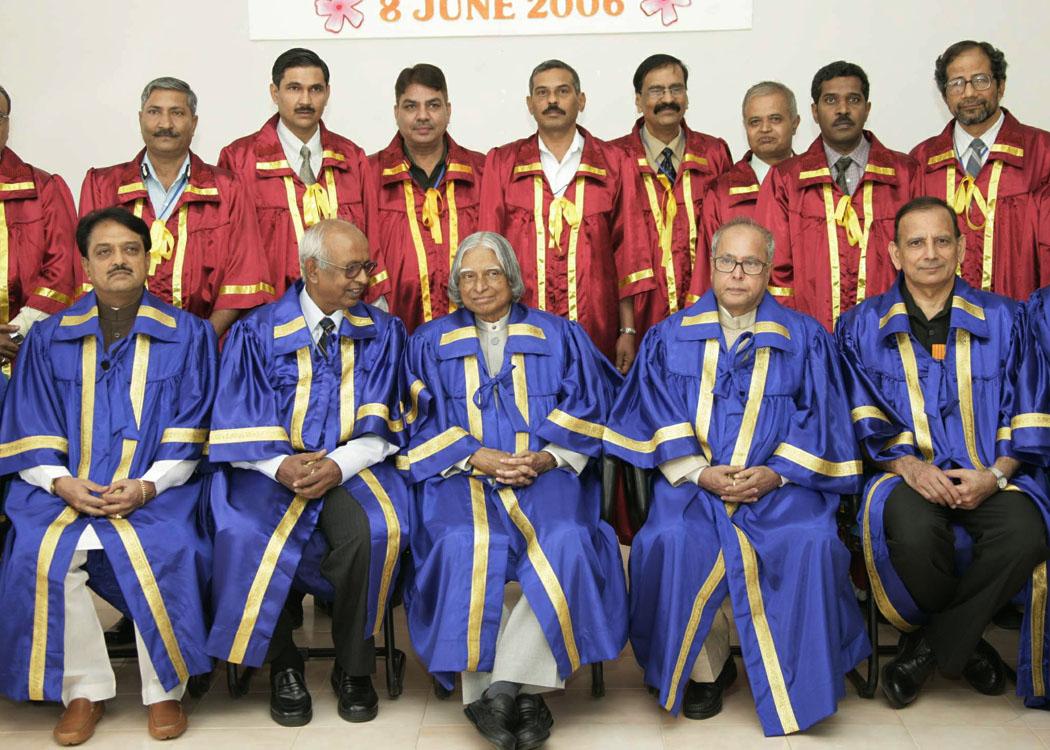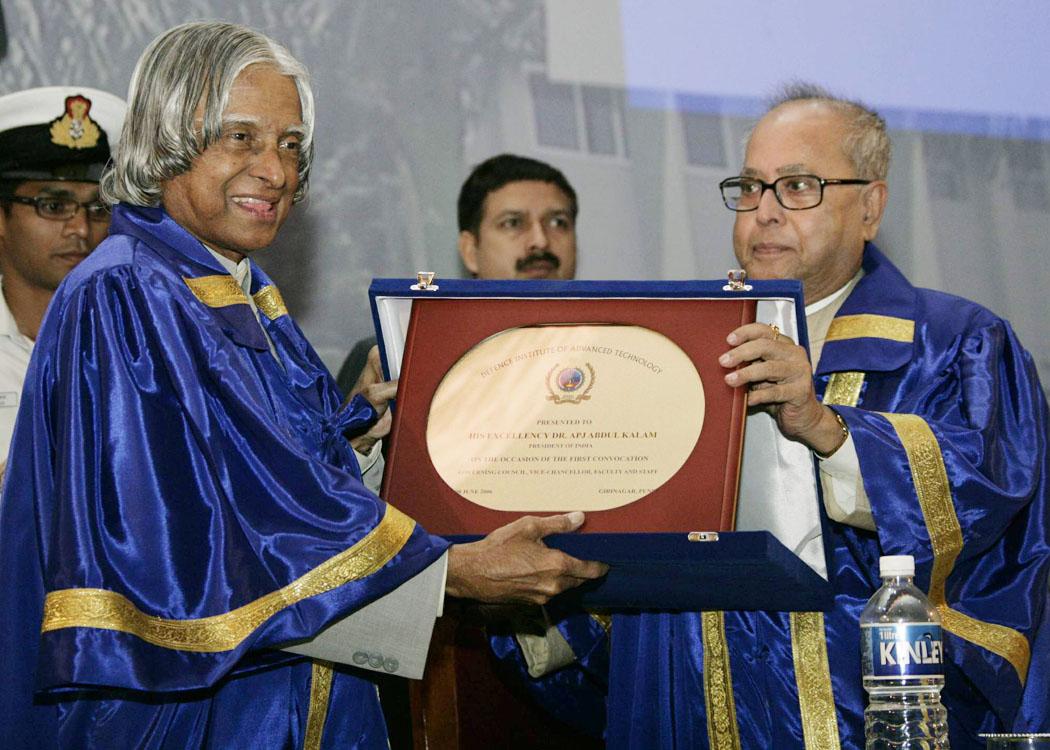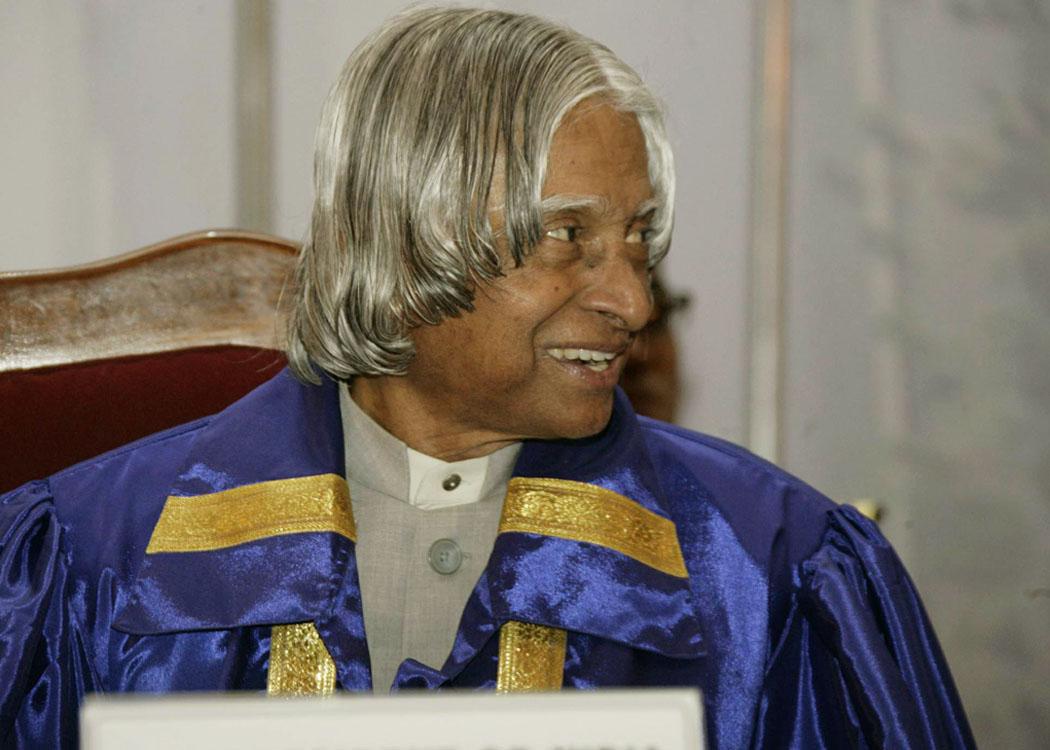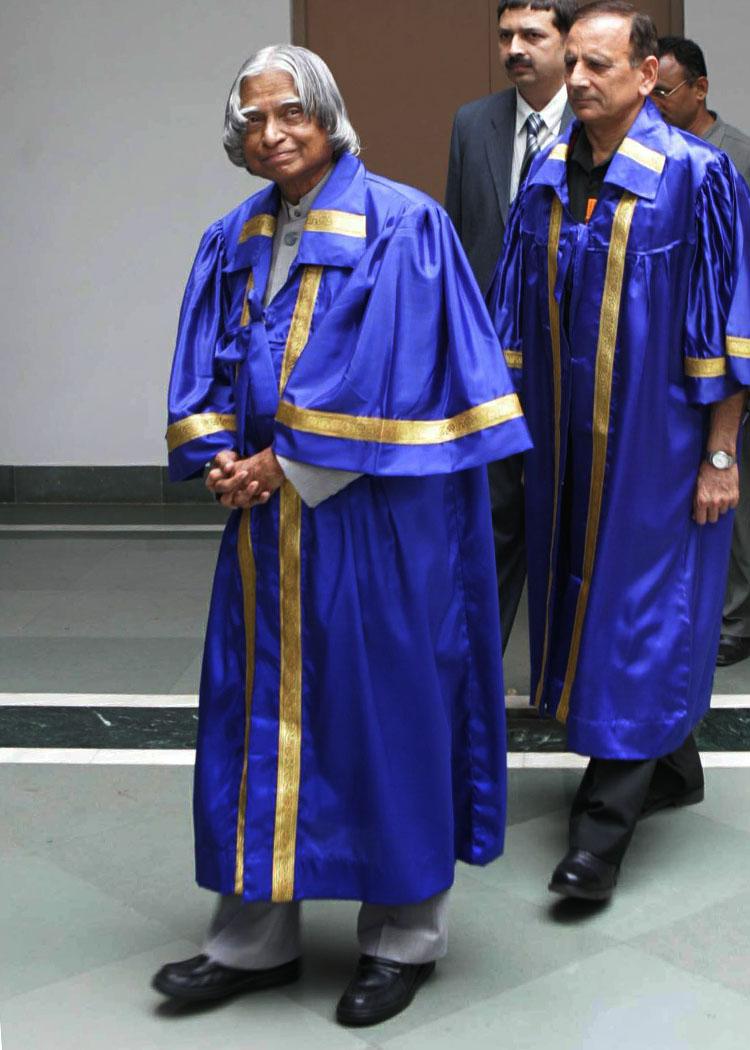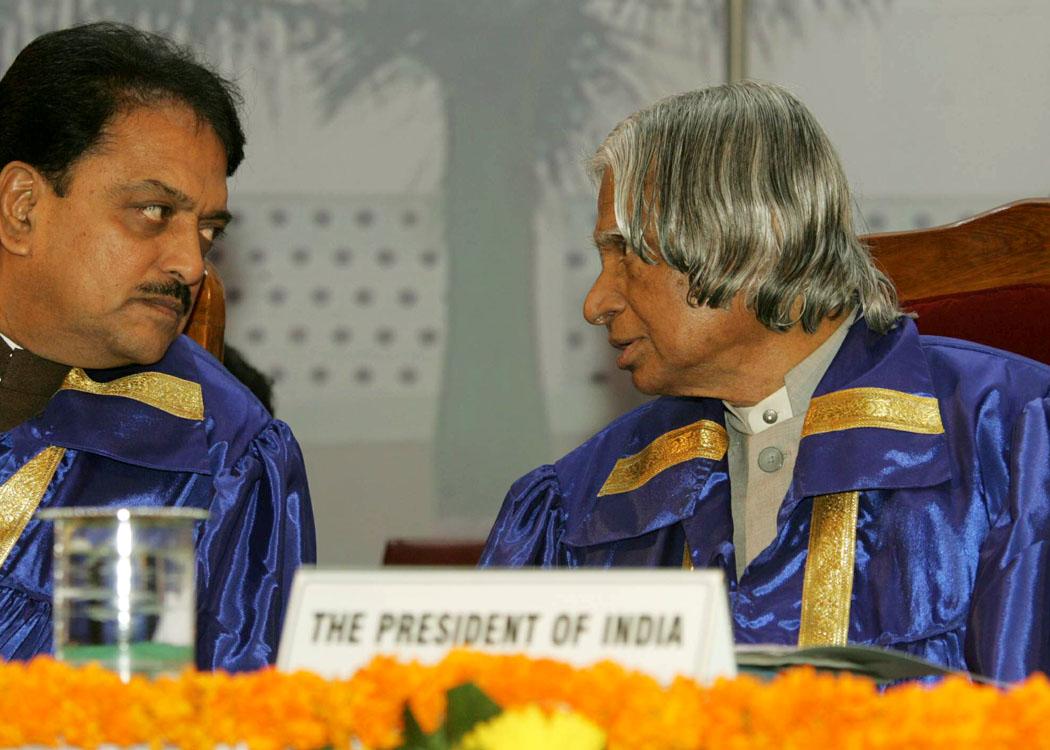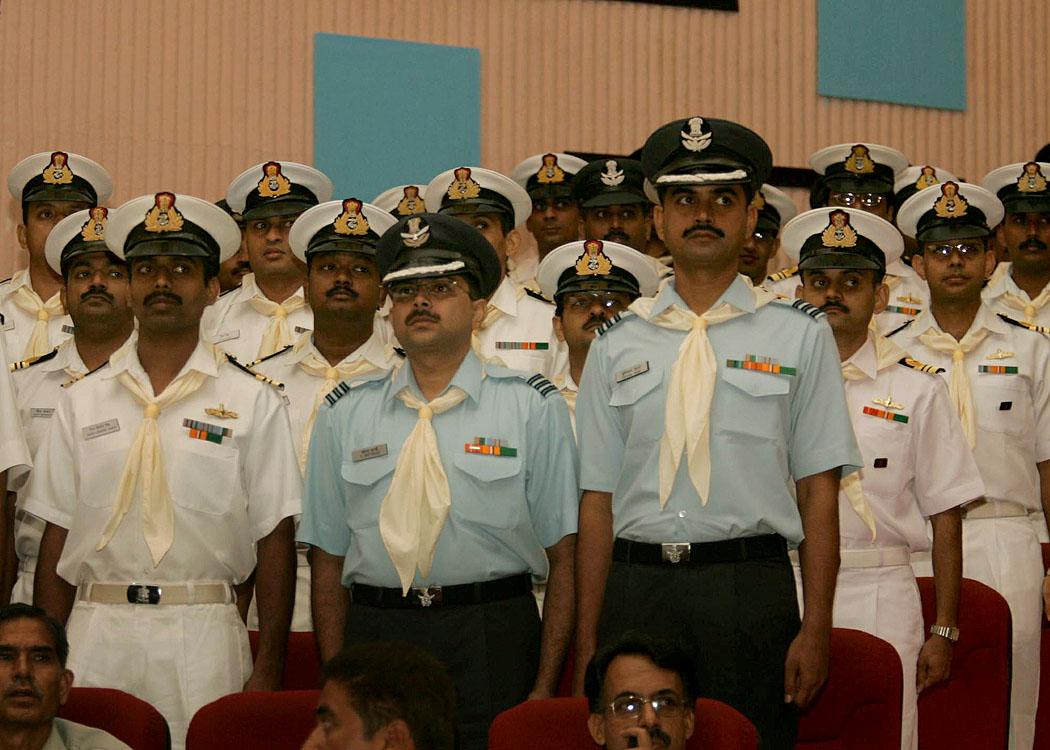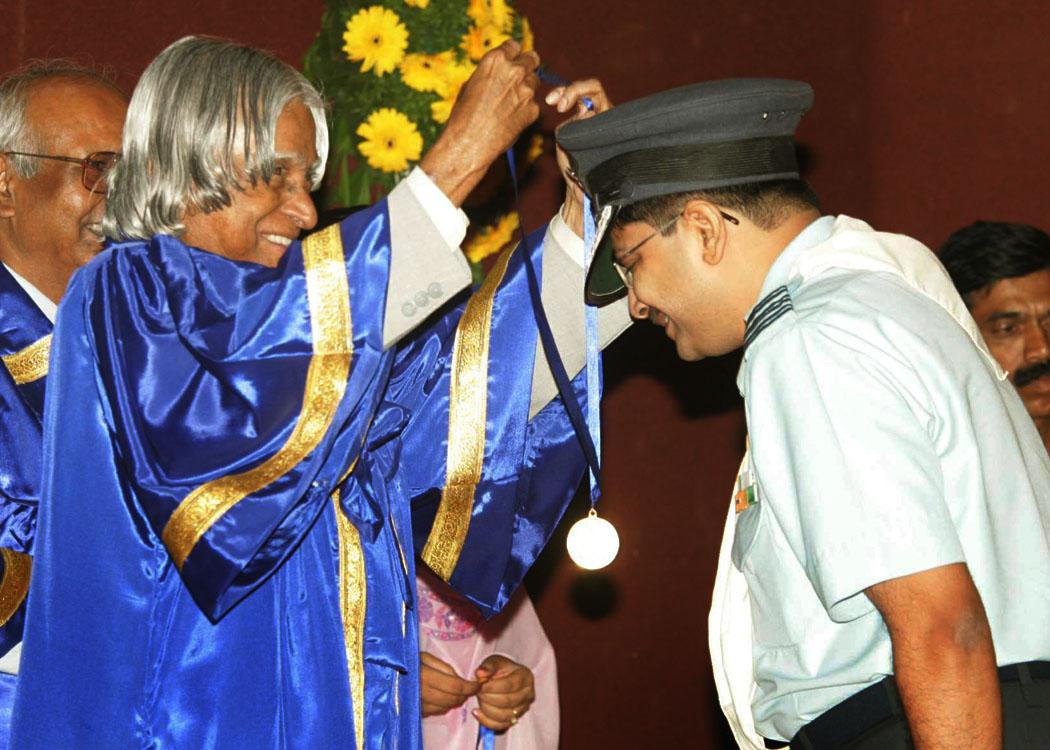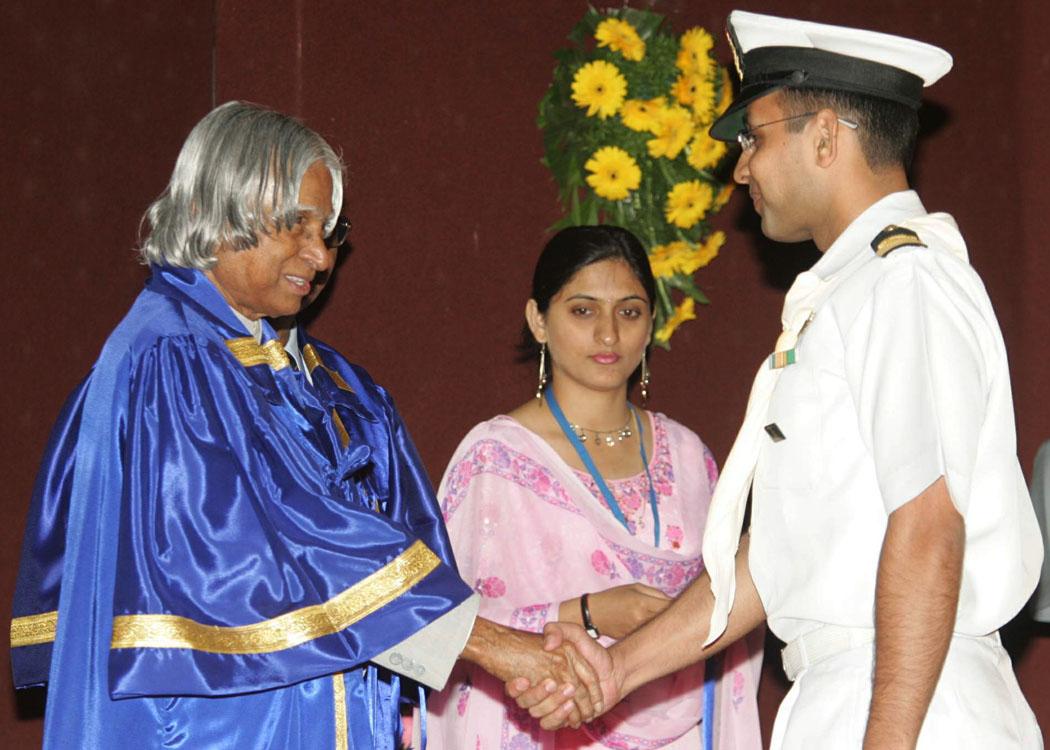Address at the First Convocation of the Defence Institute of Advanced Technology (DIAT), Pune
Pune : 08-06-2006
Research-Teaching-Research
I am delighted to participate in the first Convocation of the Defence Institute of Advanced Technology (DIAT) in the serene ambience of Kadakhavasala lake in the beautiful city of Pune. I greet the Chancellor, Vice-chancellor, Scientific Adviser to the Raksha Mantri, Faculty Members, students and distinguished guests. I congratulate the first batch of student officers who are obtaining the masters degree in different disciplines in engineering and technology relevant to defence systems. I compliment the faculty members for shaping the young minds who will be enriching their institutions after joining their parent units. I have selected the topic for discussion as "Research-Teaching-Research."
Su 30 Experience: Just now I was on board in the flight of Su 30 MKI. It is a high performance, high payload carrying capacity, long range fighter system. When the flight advanced and I was in the cruise phase, I realized that Indian Air Force has a unique fighter system in the world. It can be made into a force multiplier through the use of three BrahMos Missile, two on the wings and one under the belly. With mid-air fueling capability, Su 30 MKI integrated with BrahMos configuration will be the best fighter in the world at least for a decade. Of course the aircraft has to go through certain modifications.
I have a message for the students who are graduating today: All the advances in technology in various fields have emerged only by the spirit and enthusiasm of young to think different and to do differently and be creative. I am sure, DIAT has injected this unique trait in all of you. Now I would like to discuss about the capacities to be built among the students of DIAT.
Capacity Building
A good educational model is the need of the hour to ensure that the students from DIAT grow to contribute towards the research and development tasks of the defence services. Can we sow the seeds of capacity building among the students? There will be continuous innovation during the learning process. To realize this, special capacities are required to be built in the DIAT education system for nurturing the students. The capacities which are required to be built are research and enquiry, creativity and innovation, use of high technology, quality and evaluation management and interfacing with the user services.
Research and enquiry: The 21st century is about the management of all the knowledge and information we have generated and the value addition we bring to it. We must give our students the skills with which they find a way through the sea of knowledge that we have created and continue with life long learning. Today, we have the ability, through technology, to really and truly teach ourselves to become the life-long learners. This is required for sustained promotion of quality research and development.
Creativity and innovation: The management of knowledge in the 21st century is beyond the capacity of a single individual. The amount of information that we have around is overwhelming. The management of knowledge therefore must move out of the realm of the individual and shift into the realm of the networked groups. The students must learn how to manage knowledge collectively. When the information is networked the power and utility of the information grows as square as stated by Metcalfe's law. When Information is static, it does not grow. In the new digital economy, information that is transmitted creates innovation and contributes to national wealth.
Capacity to use high technology: Every student in DIAT should learn to know how to use the latest technologies for aiding his or her learning process. DIAT should equip themselves with adequate computing equipment, multi-media laboratory, simulation equipment, state-of-the-art research laboratory, fast access internet facilities and provide an environment for the students to enhance their learning ability through research and development exercises. In the midst of all the technological innovations and revolutions we cannot think that the role of the faculty members will be diminished. In fact the faculty members will become even more important and the research education will become faculty assisted and would help in "tele-porting" the best faculty to every nook and corner of the country and propagate the knowledge in different DRDO laboratories.
Quality and Evaluation Management: The quality and evaluation of research is an important component of research. Students from DIAT have to acquire this knowledge right from the beginning so that spirit of quality is inculcated among the student' which will enable them to ensure quality research output in their subsequent career. In addition the students should be exposed to modern techniques of concurrent engineering and virtual reality walk through, rapid proto-typing etc. so that the total time between concept to design and production is substantially reduce in the competitive world.
Interfacing with user services: Interfacing with user services is a unique feature of defence research and development. We must fully understand that the product has got to be used finally by the users. Hence, the user has got to participate in the development process right from the concept through design, proto-type production and finally quantity production. The user feedback is an important input for ensuring quality development of products. Design team must get acquainted with this philosophy and ensure that they have regular interaction with the user keeping the end goal of the product in mind. Also, it is essential to minimize the design, development and quantity production time so that online changes in the user qualitative requirement of product are minimized. This methodology was adopted in missile programme for design, development and productionization of AGNI, PRITHVI and the integrated electronic warfare system.
In sum, inquiry, creativity, technology, evaluation and quality management and interface with the user services are the five capacities required to be built through the education process in DIAT. If we develop in all our students these five capacities, we will produce "Autonomous Learner" a self-directed, self controlled, lifelong learner who will have the capacity to deliver the best of products for our defence services, thus promoting self-reliance in defence systems. The most important part of the education in DIAT is to imbibe the confidence among the students is the spirit of "we can do it". The students, when they go to their parent establishment, they will have two great qualities.
a. Confidence of using indigenously designed and developed system.
b. The importance of building capacity to promote self-reliance in defence technology.
Now, I would like to discuss the importance of research in our university system.
Research-Teaching-Research
Any University is judged by the level and extent of the research work it accomplishes. This sets in a regenerative cycle of excellence. Experience of research leads to quality teaching and quality teaching imparted to the young in turn enriches the research. Research brings transformation and development and also enhances the quality of education. DIAT should facilitate high end researchers to come and carryout quality research in the DIAT laboratories. This will enable DIAT to attract quality faculty to join them which in turn enable DIAT to attract best talents from the country and abroad. Certain battle scenario of Armed Forces, certain successful experience in indigenous development of defence systems by our scientists and technologists should become part of the curriculum of DIAT. From 2007 onwards, every year, at least 10 students should register for Ph.D. programme in DIAT for research in different areas of challenging defence technologies. Progressively DIAT may like to induct at least 20% students directly from universities, 20% students from DRDO and the balance 60% from the three services. Also, Defence Ministry may like to evolve a policy through which at least 50% of the Armed Forces students work on research and development tasks for a minimum period of three years after completing the DIAT course. Now, I would like to give few examples of how denial and non-availability becomes a research challenge to the human minds and I would like to narrate some experiences.
Meeting the computational challenge: AGNI programme
Let me share with you the development of hypersonic missile system AGNI missile, a long range missile. When AGNI re-enters in the atmosphere, it experiences a high enthalpy with the temperature of 4000oK all around the heat shield and the nose cone. We had then designed and developed the structure using a material based on Carbon-Carbon which can withstand this high temperature. The problem we faced was to simulate the external aerodynamic flow in the subsonic, supersonic and hypersonic speed regime. In India, we can externally simulate subsonic, sonic and supersonic flow. But in 1989, we did not have a hypersonic wind tunnel facility and also for AGNI class of missiles, developed countries did not give their wind tunnel facility to be used because of the technology denial. Hence, in that situation, we had to resolve the problem only through CFD (Computational Fluid Dynamics). CFD was then a new field. In India, CFD groups were in formation stage at various institutions. Prof SR Deshpande, IISc (Indian Institute of Science), Bangalore and Dr. KP Singh from ADA and their teams were pioneering in this area. About 20 members were in CFD team from various organizations. When CFD problem was formulated initially, the computational time in an IBM computer needed 240 hours. At that time, we neither had so many computers in India nor the adequate time. Prof Deshpande and the DRDL team evolved what is called "kinetic energy split methodology". The problem which needed from very large computer time was solved with 1/10th of the computer time using elegant methods by suitably segmenting the problem. Also, it triggered the necessity of design and development of super computers in the country. This led to the birth of super computers. Today, India has PACE+256, a parallel computing facility with one Terra Flop capacity for advanced CFD solutions. The evolution of Grid Computing which has got tremendous potential in connecting multiple locations and utilizing the computing power from different institutions is in progress in India. I am giving you this example so that when you face such challenges in your institutions you can find innovative methods by which you can progress the development tasks instead of getting defeated due to the non-availability of certain facility. Now I would like to narrate the methodology adopted by LCA team for progressing research when technological sanction was imposed by USA after 1998 event.
Technology denial and management Challenge: LCA
In the year 1992, LCA team decided to go for Digital-Fly-by-Wire Control System (FCS) for the Combat Aircraft as it is an unstable aircraft. At that time, the country did not have the experience in developing FCS. The only two countries who had the experience were France and US. The French company (Dassault System) had expertise in Hybrid systems whereas our need was an all Digital-Fly-by-Wire. Hence, it was thought appropriate to have a US partner who has the capability in design, development and integration of FCS on fighter aircraft. There were three candidates, LMCS, USA; Lear Astronics and Bendix. Finally, we chose LMCS for the contract since they had the experience in designing FCS for F-16 Aircraft. Joint Team for design and development of the FCS was formed with ADE (DRDO Lab) and LMCS. The work share between Indian team and LMCS team was identified. Evolution of the SRS (Software Requirement Specification) was the joint effort. The prototype flight control computer was to be done by ADE. Total system integration of FCS was the joint responsibility. Flight certification was to be provided by LMCS, USA.
The $40 million contract was progressing to meet the required schedule. Then as you all are aware, India became a nuclear weapon state in May 1998. As soon as this event occurred the American Government imposed technological and economic sanction. Due to the sanction, LMCS, USA broke the contract and retained all the Indian equipment, software and the technical information which were in their premises.
This was definitely a challenging mission for the Indian team. There was a crisis. Immediately, we had an urgent task team meeting with Directors and their team from ADA, NAL, ADE, CAIR, HAL, National Flight Test Center, Prof I.G. Sharma of IISc a renowned control system specialist, Prof T.K. Ghoshal of Jadavpur University, a digital control system expert and guidance and control specialists from DRDL and ISRO. We had a full day discussion on the methodology required to be followed through which we can successfully complete the development of digital fly by wire system and fly the LCA. The team, after prolonged deliberations gave a structured method by which the development can be completed and the system can be certified for flight trials. They also mentioned that they will support the programme in whatever capacity they have to work with the ADE and ADA teams.
Based on the recommendations of the specialists we immediately strengthened the ADE software team with additional ten experienced software engineers from ADA. ADA was given the responsibility of verification and validation of software. Integrated flight control system review committee was constituted with Director (ADE) as Chairman and PGD (ADA) as Co-chairman to support development and resolve all the conflicts arising between Control Law Team, Iron Bird, Software, Hardware and simulation. This team met once in a week and brought out all the issues arising in different work centers and solutions were found. In addition, Iron Bird (A test platform of Flight Control System) review team was formed with Project Director Flight Control System as Chairman with members from HAL, ADA, ADE, certification agency (CEMILAC) and Test Pilots from National Flight Test Center as Members. This team also met every week and resolved all the problems arising in the development and Test on Iron Bird. Any deviation in the PERT Chart or any difficulty, team members could directly bring the problem for discussion when I met them every alternate Saturday of the month. We also introduced participation of certification agency (CEMILAC) and inspection agency (CRI) in all these reviews. The aim was to see that any problem in any system is brought into focus at the earliest so that the solution can be found. In addition, we made it a point to have a special agenda in the monthly technical committee meeting on the development of integrated flight control system wherein Director (ADE), Director (NAL), Director (National Flight Test Center), General Manager (HAL) presented the progress and problems. The confidence building took place by intensifying the tests. For example informal Iron Bird test was carried out over thousand hours and the formal Iron Bird test was conducted over hundred and fifty hours. Similarly, Pilot flew the LCA simulator for more than two thousand hours. Thus, what we missed from the foreign partner, we compensated by enhancing the design, critical design review and increasing the test time to ensure safe man rated design of the integrated flight control system. This gave the confidence to the user, the Air Force.
The entire team took the denial as a national challenge. They said if it is going to take three years we will do it in two years. If it is going to take twenty million dollars we will do it in ten million dollars. Our working hours was not eight hours. We will work round the clock and complete the task. That was the time I realized the power of Indian Scientific Community, and the power of our country. I realized that no country can dominate us by imposing technological sanction or economic sanction. The power of scientific team will defeat the denials of any nation. Today I can proudly say that our scientists have designed, developed, tested, evaluated, and integrated the integrated flight control system in the LCA which has logged more than 500 trouble free flight sorties in four different aircrafts. Fifth LCA aircraft is getting ready and LSP (Limited Series Production) has already commenced.
This whole experience how our Indian team worked and faced the managerial and technological challenge should become a part of the course material of DIAT. Now I would like to discuss the need for simulation and virtual reality research facility at DIAT.
Simulation and Virtual Reality
With the advancement in technology and the increasing availability of power in the computer, digital simulation, hardware-in-loop simulation and virtual reality simulation are the important part of warfare both as a training tool and as an operational system. Large simulation facilities should be established in DIAT, including a virtual Reality Laboratory. The experiences of Armed Forces, needs of Armed Forces and the knowledge of Academic Institutions both civil and military must be fully used. This simulation facility including virtual reality laboratory and the experts in the field should become a unique R&D facility in the country. Many courses are to be designed and research area can emanate from the facility available in DIAT. This Virtual Reality Laboratory has to be known to researchers in the world.
High bandwidth and High definition - multimedia system for DIAT
I would like to share with you my recent experience which took place on 31 May 2006. I addressed the US-India summit on Education, Research and Technology organized by University of California, Santiago and Cal-IT2. It is a unique Multimedia Tele-Conference between India and USA through a high bandwidth network. The High Definition systems has been used at both ends and using the Virtual tele-education platform from Rashtrapati Bhavan Multimedia Studio. An integrated action by number of public and private organizations both from India and USA worked together to establish the hassle free high bandwidth connectivity between Rashtrapati Bhavan and UCSD. Through this high bandwidth connectivity the US audience felt my virtual presence in their hall through a high definition projection system in big screen for the whole duration of my lecture and interactive question answer session for around 90 minutes. Even though it was virtual, I felt that the audience was really with me who were really 12,000 km away. During the lecture, I could refer my website, digital library, whiteboard along with my PowerPoint presentation on line through the Virtual Tele-ED platform. This experience made me realize the power of technology as an integrator of minds leading to a borderless world with out the barriers of geography, religion and culture - a symbol of universalisation. This power of networking can be established in DIAT with research input so that it is useful to the research laboratories and Armed Forces.
Conclusion: Indomitable Spirit
On the occasion of the first convocation of DIAT, I thought of conveying an inspiring message to the graduating students. I would like to recall a great clarion call of indomitable spirit, which was given by Sir C V Raman, at the age of 82. The message is still reverberating in my mind: "I would like to tell the young men and women before me not to lose hope and courage. Success can only come to you by courageous devotion to the task lying in front of you. I can assert without fear of contradiction that the quality of the Indian mind is equal to the quality of any Teutonic, Nordic or Anglo-Saxon mind. What we lack is perhaps courage, what we lack is perhaps driving force, which takes one anywhere. We have, I think, developed an inferiority complex. I think what is needed in India today is the destruction of that defeatist spirit. We need a spirit of victory, a spirit that will carry us to our rightful place under the sun, a spirit, which will recognize that we, as inheritors of a proud civilization, are entitled to a rightful place on this planet. If that indomitable spirit were to arise, nothing can hold us from achieving our rightful destiny."
Once again let me congratulate all the students obtaining their masters degree in different disciplines of engineering and technology. My wishes to the members of DIAT for success in their mission of capacity building among students for pursuing high quality missions towards national security.
May God bless you.

